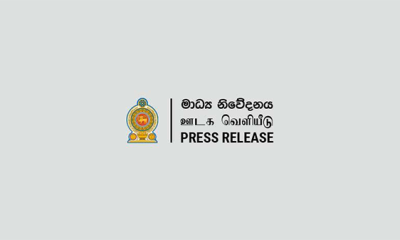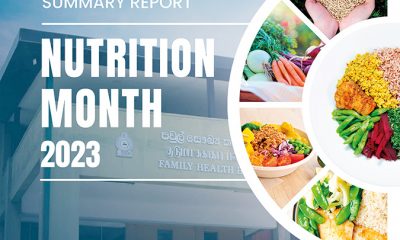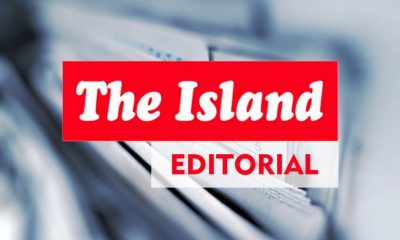Features
Medical negligence or medical error ?
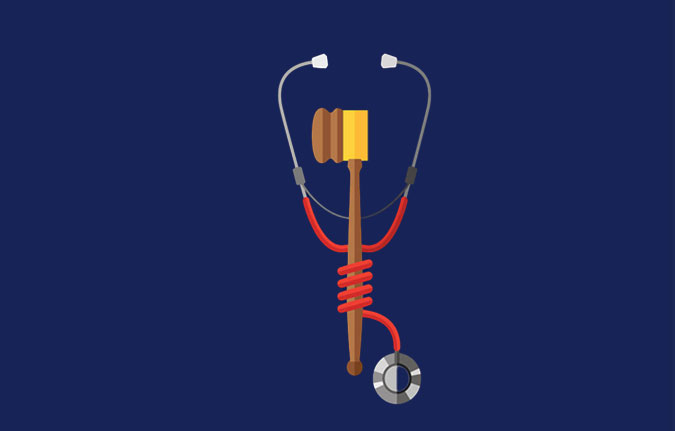
By Prof. Susirith Mendis
Preamble
The newspapers and social media have been full of news during the last few weeks about incidents in hospitals, which led to the death of patients. Obviously, we are aware of such incidents more now than then due to the feverish activity of social media.
The latest was the untimely and unnecessary death of Chamodi Sandeepani, a 21 year-old girl in the Teaching Hospital, Peradeniya. According to the mother of Chamodi, her daughter’s condition deteriorated and her body turned blue after the administration of two medications by a nurse. One of them had been identified as Ceftriaxone (a Cephalosporine antibiotic).
I was also truly disturbed when a very good friend of mine, a consultant anaesthesiologist – a long-time resident of UK, lost his brother, who was a card-carrying patient on his sensitivity to penicillin. He was injected with ‘Augementin’ (a combination drug of amoxicillin and clavulanic acid) in a major private hospital in Colombo and died immediately afterwards. It was alleged that the emergency tray was not readily available at the time of injection. There was hardly a ripple in the media about this incident.
Both these incidents point to anaphylactic shock. Death by anaphylactic shock occurs in all parts of the world – including the best of centres. But that does not mean that many of those were necessarily fatal. Some patients could have been revived with immediate appropriate response and emergency care. Too many incidents have been exposed in recent times about unexpected and untimely deaths of patients in hospitals. Allegations of negligence abound. These incidents must be investigated by independent investigators to ascertain the facts of each of these cases. The manner in which inquiries have been done in the past by the Ministry of Health leaves much to be desired. Most often, the end result is absolving the medical/health professionals and issues swept under the carpet. As in this case of Chamodi, where the inquiry panel is headed none other than by the DGHS – ‘a home and home affair’.
Nonetheless, as a medical professional, a medical teacher for over 40 years and a medical ethicist of some standing within and without our profession, I am most troubled by the responses and reactions I see in social media posted by doctors. There is a uniform response of criticising the victims and a myriad of excuses. There is not even a remote consideration of whether there has been negligence on the part of the medical/health professionals directly involved in the incident. There was a very recent case where a daughter who posted a bitter experience she had at the Nagoda Hospital of indifference and lack of concern and care in a facebook post. She was hounded and harassed by the police on a complaint from the hospital authorities. She was coerced by the Police to delete her post. A case of the combined effect of medical and police muscle.
A more conciliatory and introspective approach by the doctors will in the log run be more fruitful in improving the quality and standards of healthcare in the hospitals. Exuding arrogance, intimidatory self-defence and a mindset of ‘attack is the best form of defence’ is without doubt, counterproductive.My objective in this article is to look at the issues of medical negligence and medical errors in general and how they pertain to our perspective of the recent events that have taken hold of our attention during the last few weeks.
What I will not delve into in this article are the existent economic crisis that has lead to shortage of drugs, inferior drugs imported without due diligence to quality and standards, short-circuiting the due process and regulatory oversight of the National Medicines Regulatory Authority (NMRA) and the role played by the Minister of Health and the Ministry of Health. The last, but importantly, ‘clinician burnout’ due to the difficulties faced by medical and health professionals struggling to provide minimal patient care under dismal supply conditions. Collectively or singularly all of the above have directly or indirectly been responsible for these unfortunate deaths.
My comments herein, are issues related to medical negligence and medical error that are systemic as well as global.Let me start with a comment in a book that happened to catch my eye at the University of Georgetown Medical School Medical Ethics Library over 2 decades ago:
The book was “Examining your doctor: A patient’s guide to avoiding harmful medical care.” by Timothy B. McCall, MD (Carol Publishing Group, New York, 1995). This is the personal experience/confession of a doctor when he was training as a medical student in a University Hospital in te USA.
“My first experience taking care of patients as a medical student changed forever the way I viewed doctors. I was appalled. In the university hospital I was assigned, we treated one patient after another transferred from hospitals where they had received medical care that had nearly killed them. We saved some of them, though many of those we saved ended up disabled. We didn’t tell these patients or their families that they had been victims of poor medical care; we intentionally misled them. Covering up malpractice is just one example of the systematic way that doctors withhold information from their patients.”
Well, that says many things that most doctors in Sri Lanka would refuse to accept or even consider. Their arrogance ensures that they are never wrong. They can ever be wrong.
But, it is ironical that with better technology in healthcare available today, even in Sri Lanka, doctors are more likely to be found negligent. Is this because (i) medical standards have deteriorated? (ii) more doctors are now less skillful? (iii) they are now more careless? (iv) lawyers have realised that there is good money to make from ligigation against doctors? (v) patients have become more aware of their conditions (thanks to the internet) and therefore, more litigious? (vi) Insurance companies are paying good compensation? Or is it a relative permutation and combination of all of the above? I have not seen any serious scientific study done to ascertain the real situation in our country.
Let us now, look at a non-binding classification.
Medcal Negligence
It is an act of commission or omission by a healthcare provider in which care provided deviates from accepted standards of practice in the medical community and causes injury or death to the patient. To establish negligence, it is necessary to first establsih ‘duty of care’. A reasonable, foreseeable and actual loss or injury caused by or materially contributed to by a breach of duty of care will lead to an accusation of negligence.
This can be of two basic types: Criminal Negligence and Medical (or Clinical) Negligence. Criminal negligence is such that the negligence is grave enough for a police investigation and a prosecution by the Attorney General. It can lead to judicial sentencing and even imprisonment. Medical negligence, on the other hand, is a civil procedure, that could lead to damages being awarded by a Court of Law.
But prior to legal measures in a Court of Law, it is possible to pursue a lesser path of ‘pre-litigation’. This entails a departmental inquiry (Ministry of Health) which can lead from warning, transfer, punishment, reporting the the Sri Lanka Medical Council (SLMC) to even dismissal from service. A complaint to the SLMC can lead to periods of temporary suspension of registration. And in extreme instances, to complete erasure from the Medical Register.
There are even less serious avenues in instances where pateinet or their next of kin, can seek redress through a process of ‘conflict resolution’. Mediation is one of them. It has to be a voluntary process. There cannot be coercion on either parties – i.e., the doctors concerned or the patient. The parties meet privately with a neutral mediator who facilitates a negotiated agreement. This then binds the parties to that mutualyy agreed conditions of resolution of the conflict. This could be an unqualified apology to a meagre financial compensation for losses incurred. It is seen as a much more constructive and less adversarial process than conventional litigation. If agreement is not reached, the parties are free to initiate or continue with litigation.
Another non-litigious option for patients is to make a formal complaint to the Parliamentary Commissioner for Administration (better known as the Ombudsman). The present Ombudsman is a former Judge of the High Court of Sri Lanka. The former Secretary-General of Parliament, Sam Wijesinghe was the first – if my memory serves me right.
The positives of a non-litigious process is that it is (i) a non-threatening environment; (ii) it may give an increased sense of ‘fairness’ and justice for doctors; (iii) the legal and other costs are minimal and affordable to most.
The negatives are: (i) Will it give justice to the grievances of patients or their next of kin? (ii) Will the whole process be transparent and devoid of obvious bias? (iii) Will the process retain the confidence of both patients and doctors that justice has been done?
To ensure that the process is transparent and devoid of bias, there would be a need for non-medical or legal representation. Would it not be ideal, as in the Court process of ‘trial by a jury’, to have a committee of inquiry made up of competent civilians?
We, in Sri Lanka have no estimates of negligence. But, if we go by the many anecdotes of serious events of gross negligence we hear, and the number of litigation that have failed in a court f law or settled out of court, they are still a matter of very serious concern.
There are other conditions that I will not dwell at any length here. That is ‘medical misadventure’ where there is error or unexpected outcome during medical intervention leading to serious deleterious effect on patient. This happends most often in surgical and anaesthetic practice. An ‘adverse event’ is defined as an undesirable and unintentional, though not necessarily unexpected, result of medical treatment. Examples of an adverse event is discomfort in an artificial joint that continues after the expected recovery period, painful cheloids developing after open-heart surgery or a chronic headache following a spinal tap.
Medical Error
Medical error has been defined as an unintended act (either of omission or commission) or one that does not achieve its intended outcome; the failure of a planned action to be completed as intended (an error of execution); the use of a wrong plan to achieve an aim (an error of planning); or a deviation from the process of care that may or may not cause harm to the patient. Patient harm from medical error can occur at the individual or system level.
There are many ways that medical care can go wrong. Errors can occur around the administration of medications (including adverse drug events/reactions), during laboratory testing, pathology reports, hospital infections, as a result of surgery or even in documentation or data entry tasks.
Medication error are the leading cause of negligence, error and adverse events. They include; (i) prescribing errors; (ii) failure to prescribe, administer, or dispense a medication; (iii) a patient receiving a medication too late or too early; (iv) a patient receiving a drug not authorized for them; (v) improper use of a medication; (vi) wrong dose prescription or preparation; (vii) administration errors; (viii) failure to take into account a patient’s medical conditions or potential drug interactions; and (ix) not following proper dispensing/prescribing rules for a medication.
“To err is human”
An average of 195,000 people in the USA died due to potentially preventable, in-hospital medical errors in each of the years 2000, 2001 and 2002, according to a study of 37 million patient records. (The Health Grades Patient Safety in American Hospitals study (2000-02).
According to Dr. Lucien Leape, lead the author of a Harvard study, the number of deaths from medical errors in hospitals account for the equivalent to the death toll from three jumbo jet crashes every two days.( Public Health Reports , 1999; 114: 302-317 July/August, 1999).More people die each year in the United States from medical errors than from highway accidents, breast cancer or AIDS, a federal advisory panel has reported.
The report from the National Academy of Sciences’ Institute of Medicine cited studies showing between 44,000 and 98,000 people die each year because of mistakes by medical professionals. “That’s probably an underestimate for two reasons, one is, there are many different kinds of errors we never learn about — even in retrospective studies — because they are never written down. Second, these studies did not include other areas of care like home care, nursing homes and ambulatory care centers.” (Dr. Donald Berwick of the National Academic of Medicine, Washington DC). Medical error is the third leading cause of death in the US according to a BMJ article (BMJ 2016;353:i2139).
Here are some more statistics from the USA. The FDA receives more than 100,000 reports every year that are associated with medication errors (FDA, 2019). Forty-one percent of Americans report having been involved with a medical error either personally or secondhand (Institute for Healthcare Improvement/NORC at the University of Chicago, 2017). More than 7 million patients in the U.S. are impacted by medication errors every year (Journal of Community Hospital Internal Medicine Perspectives, 2016). Ten percent of hospital patients will be subject to a medication error (NCBI, 2019).By 2023, medication errors in the US has been tied to $40 billion in spending and up to 9000 deaths each year.
What about Sri Lanka?
To my knowledge, there are neither records of ‘medical error’ nor surveys or audits done for us to have an understanding, or even estimates, of medical negligence or errors in Sri Lanka. I am open to correction, if there are. The only record I know of is Professor Carlo Fonseka’s seminal article in the BMJ (Volume 313 21-28 December 1996) titled “To Err was Fatal”. In it he writes of five fatal errors he made that caused the death of five patient. I think it is compulsory reading for all doctors who have not yet read it. In it he makes five important and profound observations: (i) All doctors are fallible; (ii) The natural reaction of doctors to errors is to hide them or to rationalise them away; (iii) It is unscientific and unethical to refuse to face our errors; (iv) There is no cathartic ritual in our profession to expiate the sense of guilt generated by our errors; (v) Since knowledge grows mainly by error recognition, facing our errors squarely is the path to medical wisdom.
As Prof. Carlo Fonseka stated, doctors are not infallible, no matter how much patients would like them to be. While doctors’ mistakes are not usually intentional, they are often preventable and typically occur when doctors fail to exercise the proper level of care and skill. Hence, it is not difficult to accept that doctor errors occur more frequently than patients realise. The recent events are the tip of the proverbial iceberg.
Unfortunately, when doctors’ mistakes do happen, the consequences can be disastrous – even fatal. In which direction should we in Sri Lanka tread? The path traced by the West? Or go back to our own traditions and culture? Our social relations are based on the ‘Eastern Philosophical Tradition’. The Sri Lankan social milieu is predominantly based on Buddhist Philosophy – ‘The Four Noble Truths’ and ‘The Eightfold Path’ and the values of Meththa, Karuna, Muditha and Upeksha.
We are ‘serendipitously’ placed. We are a nation where all 4 major religions are practiced. Do we need to follow or abide by the Western medical ethical tradition coming down from Aesclepius and Hippocrates ?
We practice Modern Western Scientific Medicine in a socio-cultural milieu seeped in ancient Eastern traditions. Can we take inspiration from those traditions and synthesise a ‘New Medical ethical tradition’ by bridging this philosophical divide?
Do we have both the creativity and the courage to do so? If we have, we can in all probability avoid the pitfalls that the practice of medicine has fallen in the West (and in particular, the USA).Let these recent unfortunate and possible unavoidable deaths open us as medical professionals to a more humane and humanistic approach to patient care in Sri Lanka.
Features
Rethinking post-disaster urban planning: Lessons from Peradeniya
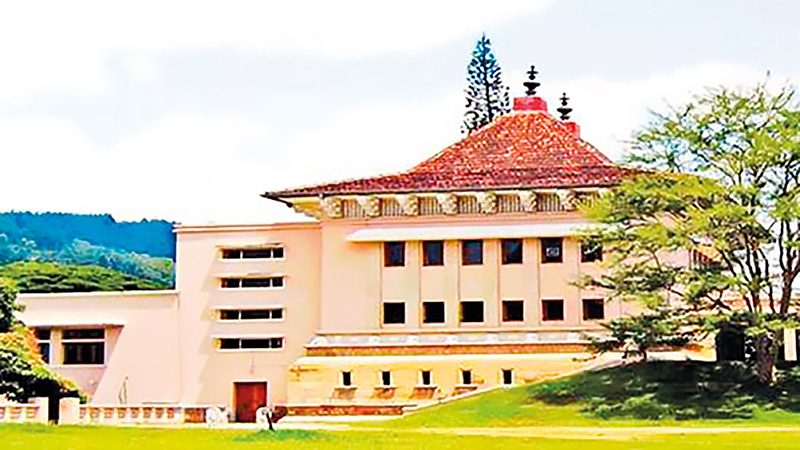
A recent discussion by former Environment Minister, Eng. Patali Champika Ranawaka on the Derana 360 programme has reignited an important national conversation on how Sri Lanka plans, builds and rebuilds in the face of recurring disasters.
His observations, delivered with characteristic clarity and logic, went beyond the immediate causes of recent calamities and focused sharply on long-term solutions—particularly the urgent need for smarter land use and vertical housing development.
Ranawaka’s proposal to introduce multistoried housing schemes in the Gannoruwa area, as a way of reducing pressure on environmentally sensitive and disaster-prone zones, resonated strongly with urban planners and environmentalists alike.
It also echoed ideas that have been quietly discussed within academic and conservation circles for years but rarely translated into policy.
One such voice is that of Professor Siril Wijesundara, Research Professor at the National Institute of Fundamental Studies (NIFS) and former Director General of the Royal Botanic Gardens, Peradeniya, who believes that disasters are often “less acts of nature and more outcomes of poor planning.”
“What we repeatedly see in Sri Lanka is not merely natural disasters, but planning failures,” Professor Wijesundara told The Island.
“Floods, landslides and environmental degradation are intensified because we continue to build horizontally, encroaching on wetlands, forest margins and river reservations, instead of thinking vertically and strategically.”
The former Director General notes that the University of Peradeniya itself offers a compelling case study of both the problem and the solution. The main campus, already densely built and ecologically sensitive, continues to absorb new faculties, hostels and administrative buildings, placing immense pressure on green spaces and drainage systems.
“The Peradeniya campus was designed with landscape harmony in mind,” he said. “But over time, ad-hoc construction has compromised that vision. If development continues in the same manner, the campus will lose not only its aesthetic value but also its ecological resilience.”
Professor Wijesundara supports the idea of reorganising the Rajawatte area—located away from the congested core of the university—as a future development zone. Rather than expanding inward and fragmenting remaining open spaces, he argues that Rajawatte can be planned as a well-designed extension, integrating academic, residential and service infrastructure in a controlled manner.
Crucially, he stresses that such reorganisation must go hand in hand with social responsibility, particularly towards minor staff currently living in the Rajawatte area.
“These workers are the backbone of the university. Any development plan must ensure their dignity and wellbeing,” he said. “Providing them with modern, safe and affordable multistoried housing—especially near the railway line close to the old USO premises—would be both humane and practical.”
According to Professor Wijesundara, housing complexes built near existing transport corridors would reduce daily commuting stress, minimise traffic within the campus, and free up valuable land for planned academic use.
More importantly, vertical housing would significantly reduce the university’s physical footprint.
Drawing parallels with Ranawaka’s Gannoruwa proposal, he emphasised that vertical development is no longer optional for Sri Lanka.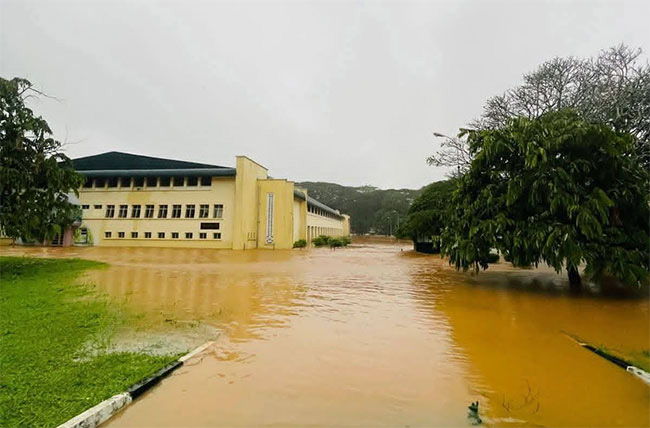
“We are a small island with a growing population and shrinking safe land,” he warned.
“If we continue to spread out instead of building up, disasters will become more frequent and more deadly. Vertical housing, when done properly, is environmentally sound, economically efficient and socially just.”
The veteran botanist also highlighted the often-ignored link between disaster vulnerability and the destruction of green buffers.
“Every time we clear a lowland, a wetland or a forest patch for construction, we remove nature’s shock absorbers,” he said.
“The Royal Botanic Gardens has survived floods for over a century precisely because surrounding landscapes once absorbed excess water. Urban planning must learn from such ecological wisdom.”
Professor Wijesundara believes that universities, as centres of knowledge, should lead by example.
“If an institution like Peradeniya cannot demonstrate sustainable planning, how can we expect cities to do so?” he asked. “This is an opportunity to show that development and conservation are not enemies, but partners.”
As climate-induced disasters intensify across the country, voices like his—and proposals such as those articulated by Patali Champika Ranawaka—underscore a simple but urgent truth: Sri Lanka’s future safety depends not only on disaster response, but on how and where we build today.
The challenge now lies with policymakers and planners to move beyond television studio discussions and academic warnings, and translate these ideas into concrete, people-centred action.
By Ifham Nizam ✍️
Features
Superstition – Major barrier to learning and social advancement

At the initial stage of my six-year involvement in uplifting society through skill-based initiatives, particularly by promoting handicraft work and teaching students to think creatively and independently, my efforts were partially jeopardized by deep-rooted superstition and resistance to rational learning.
Superstitions exerted a deeply adverse impact by encouraging unquestioned belief, fear, and blind conformity instead of reasoning and evidence-based understanding. In society, superstition often sustains harmful practices, social discrimination, exploitation by self-styled godmen, and resistance to scientific or social reforms, thereby weakening rational decision-making and slowing progress. When such beliefs penetrate the educational environment, students gradually lose the habit of asking “why” and “how,” accepting explanations based on fate, omens, or divine intervention rather than observation and logic.
Initially, learners became hesitant to challenge me despite my wrong interpretation of any law, less capable of evaluating information critically, and more vulnerable to misinformation and pseudoscience. As a result, genuine efforts towards social upliftment were obstructed, and the transformative power of education, which could empower individuals economically and intellectually, was weakened by fear-driven beliefs that stood in direct opposition to progress and rational thought. In many communities, illnesses are still attributed to evil spirits or curses rather than treated as medical conditions. I have witnessed educated people postponing important decisions, marriages, journeys, even hospital admissions, because an astrologer predicted an “inauspicious” time, showing how fear governs rational minds.
While teaching students science and mathematics, I have clearly observed how superstition acts as a hidden barrier to learning, critical thinking, and intellectual confidence. Many students come to the classroom already conditioned to believe that success or failure depends on luck, planetary positions, or divine favour rather than effort, practice, and understanding, which directly contradicts the scientific spirit. I have seen students hesitate to perform experiments or solve numerical problems on certain “inauspicious” days.
In mathematics, some students label themselves as “weak by birth”, which creates fear and anxiety even before attempting a problem, turning a subject of logic into a source of emotional stress. In science classes, explanations based on natural laws sometimes clash with supernatural beliefs, and students struggle to accept evidence because it challenges what they were taught at home or in society. This conflict confuses young minds and prevents them from fully trusting experimentation, data, and proof.
Worse still, superstition nurtures dependency; students wait for miracles instead of practising problem-solving, revision, and conceptual clarity. Over time, this mindset damages curiosity, reduces confidence, and limits innovation, making science and mathematics appear difficult, frightening, or irrelevant. Many science teachers themselves do not sufficiently emphasise the need to question or ignore such irrational beliefs and often remain limited to textbook facts and exam-oriented learning, leaving little space to challenge superstition directly. When teachers avoid discussing superstition, they unintentionally reinforce the idea that scientific reasoning and superstitious beliefs can coexist.
To overcome superstition and effectively impose critical thinking among students, I have inculcated the process to create a classroom culture where questioning was encouraged and fear of being “wrong” was removed. Students were taught how to think, not what to think, by consistently using the scientific method—observation, hypothesis, experimentation, evidence, and conclusion—in both science and mathematics lessons. I have deliberately challenged superstitious beliefs through simple demonstrations and hands-on experiments that allow students to see cause-and-effect relationships for themselves, helping them replace belief with proof.
Many so-called “tantrik shows” that appear supernatural can be clearly explained and exposed through basic scientific principles, making them powerful tools to fight superstition among students. For example, acts where a tantrik places a hand or tongue briefly in fire without injury rely on short contact time, moisture on the skin, or low heat transfer from alcohol-based flames rather than divine power.
“Miracles” like ash or oil repeatedly appearing from hands or idols involve concealment or simple physical and chemical tricks. When these tricks are demonstrated openly in classrooms or science programmes and followed by clear scientific explanations, students quickly realise how easily perception can be deceived and why evidence, experimentation, and critical questioning are far more reliable than blind belief.
Linking concepts to daily life, such as explaining probability to counter ideas of luck, or biology to explain illness instead of supernatural causes, makes rational explanations relatable and convincing.
Another unique example that I faced in my life is presented here. About 10 years ago, when I entered my new house but did not organise traditional rituals that many consider essential for peace and prosperity as my relatives believed that without them prosperity would be blocked. Later on, I could not utilise the entire space of my newly purchased house for earning money, largely because I chose not to perform certain rituals.
While this decision may have limited my financial gains to some extent, I do not consider it a failure in the true sense. I feel deeply satisfied that my son and daughter have received proper education and are now well settled in their employment, which, to me, is a far greater achievement than any ritual-driven expectation of wealth. My belief has always been that a house should not merely be a source of income or superstition-bound anxiety, but a space with social purpose.
Instead of rituals, I strongly feel that the unused portion of my house should be devoted to running tutorials for poor and underprivileged students, where knowledge, critical thinking, and self-reliance can be nurtured. This conviction gives me inner peace and reinforces my faith that education and service to society are more meaningful measures of success than material profit alone.
Though I have succeeded to some extent, this success has not been complete due to the persistent influence of superstition.
by Dr Debapriya Mukherjee
Former Senior Scientist
Central Pollution Control Board, India ✍️
Features
Race hate and the need to re-visit the ‘Clash of Civilizations’

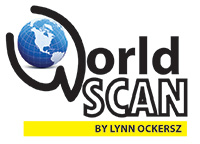 Australian Prime Minister Anthony Albanese has done very well to speak-up against and outlaw race hate in the immediate aftermath of the recent cold-blooded gunning down of several civilians on Australia’s Bondi Beach. The perpetrators of the violence are believed to be ardent practitioners of religious and race hate and it is commendable that the Australian authorities have lost no time in clearly and unambiguously stating their opposition to the dastardly crimes in question.
Australian Prime Minister Anthony Albanese has done very well to speak-up against and outlaw race hate in the immediate aftermath of the recent cold-blooded gunning down of several civilians on Australia’s Bondi Beach. The perpetrators of the violence are believed to be ardent practitioners of religious and race hate and it is commendable that the Australian authorities have lost no time in clearly and unambiguously stating their opposition to the dastardly crimes in question.
The Australian Prime Minister is on record as stating in this connection: ‘ New laws will target those who spread hate, division and radicalization. The Home Affairs Minister will also be given new powers to cancel or refuse visas for those who spread hate and a new taskforce will be set up to ensure the education system prevents, tackles and properly responds to antisemitism.’
It is this promptness and single-mindedness to defeat race hate and other forms of identity-based animosities that are expected of democratic governments in particular world wide. For example, is Sri Lanka’s NPP government willing to follow the Australian example? To put the record straight, no past governments of Sri Lanka initiated concrete measures to stamp out the evil of race hate as well but the present Sri Lankan government which has pledged to end ethnic animosities needs to think and act vastly differently. Democratic and progressive opinion in Sri Lanka is waiting expectantly for the NPP government’ s positive response; ideally based on the Australian precedent to end race hate.
Meanwhile, it is apt to remember that inasmuch as those forces of terrorism that target white communities world wide need to be put down their counterpart forces among extremist whites need to be defeated as well. There could be no double standards on this divisive question of quashing race and religious hate, among democratic governments.
The question is invariably bound up with the matter of expeditiously and swiftly advancing democratic development in divided societies. To the extent to which a body politic is genuinely democratized, to the same degree would identity based animosities be effectively managed and even resolved once and for all. To the extent to which a society is deprived of democratic governance, correctly understood, to the same extent would it experience unmanageable identity-bred violence.
This has been Sri Lanka’s situation and generally it could be stated that it is to the degree to which Sri Lankan citizens are genuinely constitutionally empowered that the issue of race hate in their midst would prove manageable. Accordingly, democratic development is the pressing need.
While the dramatic blood-letting on Bondi Beach ought to have driven home to observers and commentators of world politics that the international community is yet to make any concrete progress in the direction of laying the basis for an end to identity-based extremism, the event should also impress on all concerned quarters that continued failure to address the matters at hand could prove fatal. The fact of the matter is that identity-based extremism is very much alive and well and that it could strike devastatingly at a time and place of its choosing.
It is yet premature for the commentator to agree with US political scientist Samuel P. Huntingdon that a ‘Clash of Civilizations’ is upon the world but events such as the Bondi Beach terror and the continuing abduction of scores of school girls by IS-related outfits, for instance, in Northern Africa are concrete evidence of the continuing pervasive presence of identity-based extremism in the global South.
As a matter of great interest it needs mentioning that the crumbling of the Cold War in the West in the early nineties of the last century and the explosive emergence of identity-based violence world wide around that time essentially impelled Huntingdon to propound the hypothesis that the world was seeing the emergence of a ‘Clash of Civilizations’. Basically, the latter phrase implied that the Cold War was replaced by a West versus militant religious fundamentalism division or polarity world wide. Instead of the USSR and its satellites, the West, led by the US, had to now do battle with religion and race-based militant extremism, particularly ‘Islamic fundamentalist violence’ .
Things, of course, came to a head in this regard when the 9/11 calamity centred in New York occurred. The event seemed to be startling proof that the world was indeed faced with a ‘Clash of Civilizations’ that was not easily resolvable. It was a case of ‘Islamic militant fundamentalism’ facing the great bulwark, so to speak, of ‘ Western Civilization’ epitomized by the US and leaving it almost helpless.
However, it was too early to write off the US’ capability to respond, although it did not do so by the best means. Instead, it replied with military interventions, for example, in Iraq and Afghanistan, which moves have only earned for the religious fundamentalists more and more recruits.
Yet, it is too early to speak in terms of a ‘Clash of Civilizations’. Such a phenomenon could be spoken of if only the entirety of the Islamic world took up arms against the West. Clearly, this is not so because the majority of the adherents of Islam are peaceably inclined and want to coexist harmoniously with the rest of the world.
However, it is not too late for the US to stop religious fundamentalism in its tracks. It, for instance, could implement concrete measures to end the blood-letting in the Middle East. Of the first importance is to end the suffering of the Palestinians by keeping a tight leash on the Israeli Right and by making good its boast of rebuilding the Gaza swiftly.
Besides, the US needs to make it a priority aim to foster democratic development worldwide in collaboration with the rest of the West. Military expenditure and the arms race should be considered of secondary importance and the process of distributing development assistance in the South brought to the forefront of its global development agenda, if there is one.
If the fire-breathing religious demagogue’s influence is to be blunted worldwide, then, it is development, understood to mean equitable growth, that needs to be fostered and consolidated by the democratic world. In other words, the priority ought to be the empowerment of individuals and communities. Nothing short of the latter measures would help in ushering a more peaceful world.
-

 News5 days ago
News5 days agoMembers of Lankan Community in Washington D.C. donates to ‘Rebuilding Sri Lanka’ Flood Relief Fund
-

 News3 days ago
News3 days agoBritish MP calls on Foreign Secretary to expand sanction package against ‘Sri Lankan war criminals’
-
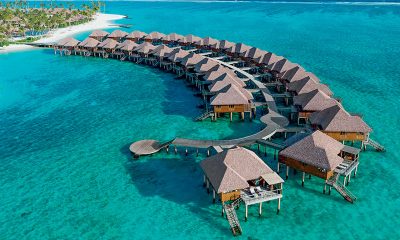
 Business7 days ago
Business7 days agoBrowns Investments sells luxury Maldivian resort for USD 57.5 mn.
-

 News6 days ago
News6 days agoAir quality deteriorating in Sri Lanka
-

 News6 days ago
News6 days agoCardinal urges govt. not to weaken key socio-cultural institutions
-
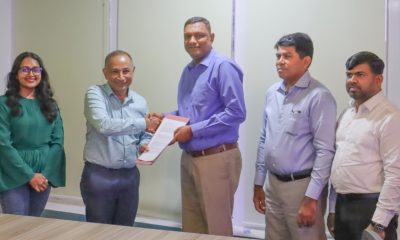
 Features7 days ago
Features7 days agoHatton Plantations and WNPS PLANT Launch 24 km Riparian Forest Corridor
-
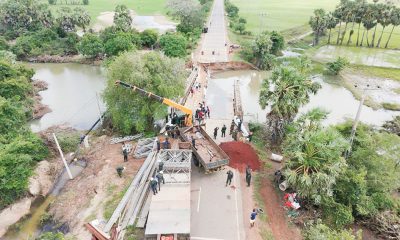
 Features7 days ago
Features7 days agoAnother Christmas, Another Disaster, Another Recovery Mountain to Climb
-

 Features5 days ago
Features5 days agoGeneral education reforms: What about language and ethnicity?


